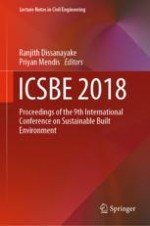2020 | OriginalPaper | Buchkapitel
Treatment of Wastewater with High Nitrogen Loading by Moving Bed Biofilm Reactor
verfasst von : H. K. D. T. Karunarathne, L. K. U. De Silva, K. B. S. N. Jinadasa
Erschienen in: ICSBE 2018
Verlag: Springer Singapore
Aktivieren Sie unsere intelligente Suche, um passende Fachinhalte oder Patente zu finden.
Wählen Sie Textabschnitte aus um mit Künstlicher Intelligenz passenden Patente zu finden. powered by
Markieren Sie Textabschnitte, um KI-gestützt weitere passende Inhalte zu finden. powered by
